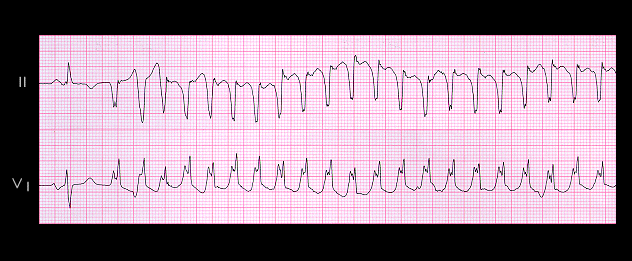
The presence of AV dissociation is a most a important (and some believe THE most important) clue in differentiating wide complex tachycardias that are ventricular in origin from those that are supraventricular in origin. For that reason, the search for P waves and the recognition that they may be quite subtle and not equally obvious in all leads is very important. It is also most helpful to study the onset of the arrhythmias to determine if it is initiated by a P wave and/or if AV dissociation is present.
The ECG shown here is from a 58 year old male with a history of a prior myocardial infraction and several syncopal episodes. Try to determine if the run of wide complex beats is initiated by a P wave and whether or not AV dissociation is present.
